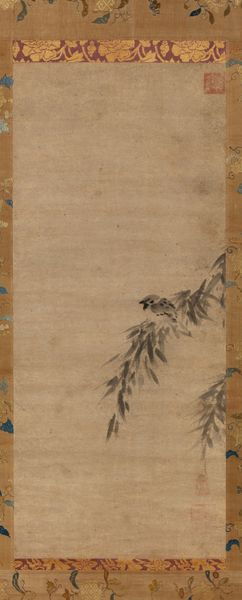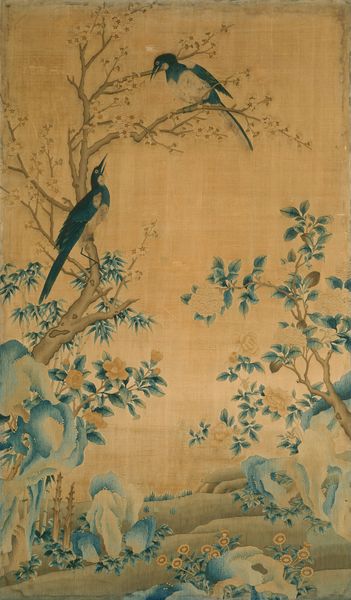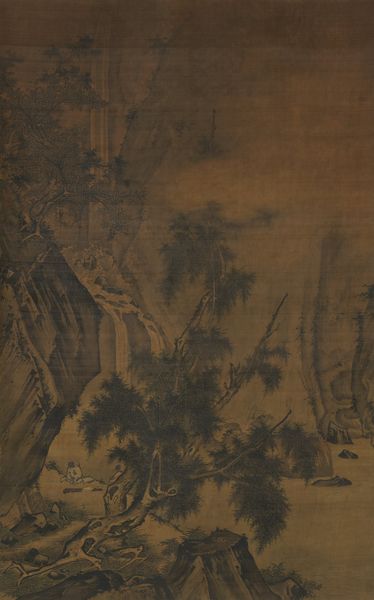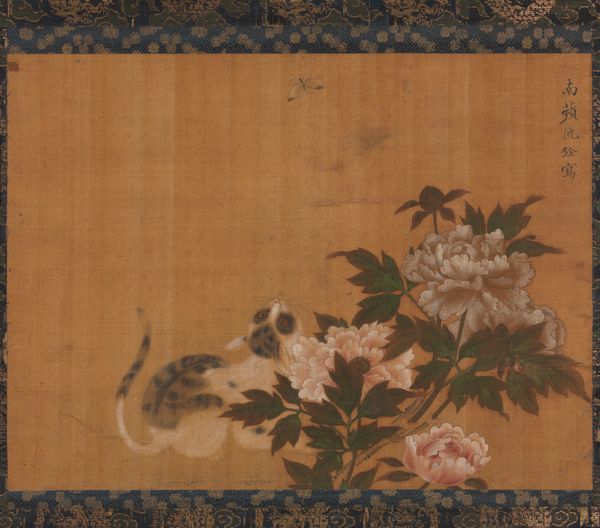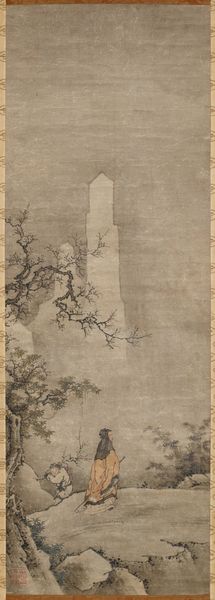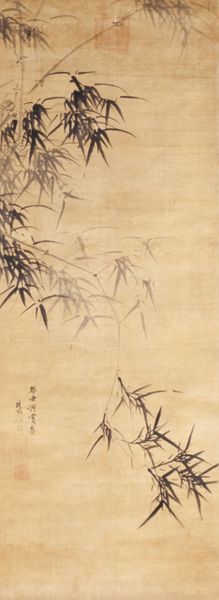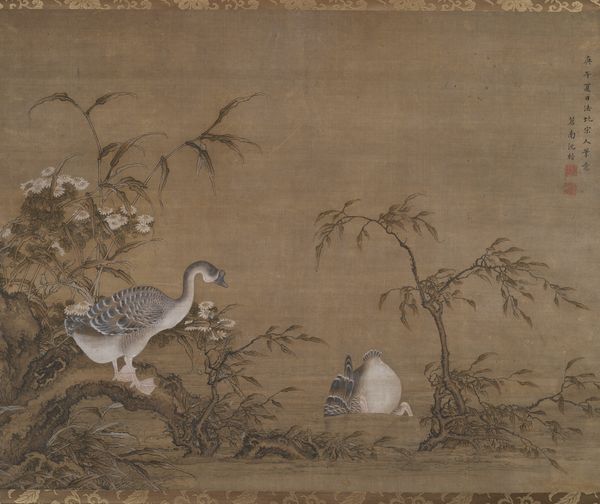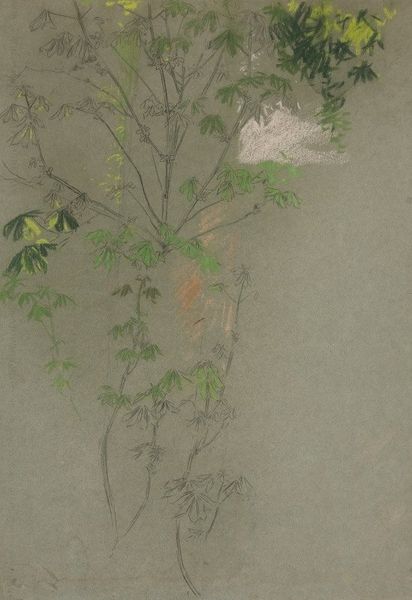
Dimensions: 46-1/2 x 20-11/16 in. (118.1 x 52.5 cm)
Copyright: Public Domain
This is an ink and color on silk painting of quails and bamboo attributed to Jin Shi. Bamboo, with its resilient strength and ability to bend without breaking, is often a symbol of steadfastness and flexibility, virtues revered in Confucianism and other Eastern philosophies. The quail, often seen in pairs, represents peace and abundance. When combined, as we see here, bamboo and quail may signify a wish for tranquility and prosperity. This combination finds echoes in other works, transcending cultural and temporal boundaries, such as in Song dynasty paintings that also depict birds amidst foliage, alluding to harmony and blessings. The quail's call, depicted in this painting by the open beak of one of the birds, is a powerful invocation, a yearning that engages us on a profound, subconscious level. The motif cycles through history, resurfacing with new meanings, its emotional and psychological weight ever present, an echo of ancient longings.
Comments
minneapolisinstituteofart almost 2 years ago
⋮
Two quails perch on a rock beneath overhanging chrysanthemums at the foot of towering bamboo and fragrant osmanthus. Both the chrysanthemum and osmanthus blossom in autumn, suggesting that this painting was meant to hang during the fall season. Interestingly, a strain of red osmanthus with intense fragrance was developed during the early Ming dynasty at Jin's birthplace. Jin, whose signature appears on this work, was born in the Yin district, modern Ningbo, in Zhejiang province. In 1441, he passed the provincial examination and was appointed Secretariat Drafter at the Hall of Literary Splendor (Wenghuadian). He was best known for his calligraphy and paintings of bamboo and rocks, especially those done in the ink-outline style. The careful delineation of form, subject matter, and compositional features seen here are all grounded in Song dynasty (960-1279) flower-and-bird painting. The revival of Song pictorial styles was common during early Ming, especially in Zhejiang province.
Join the conversation
Join millions of artists and users on Artera today and experience the ultimate creative platform.
